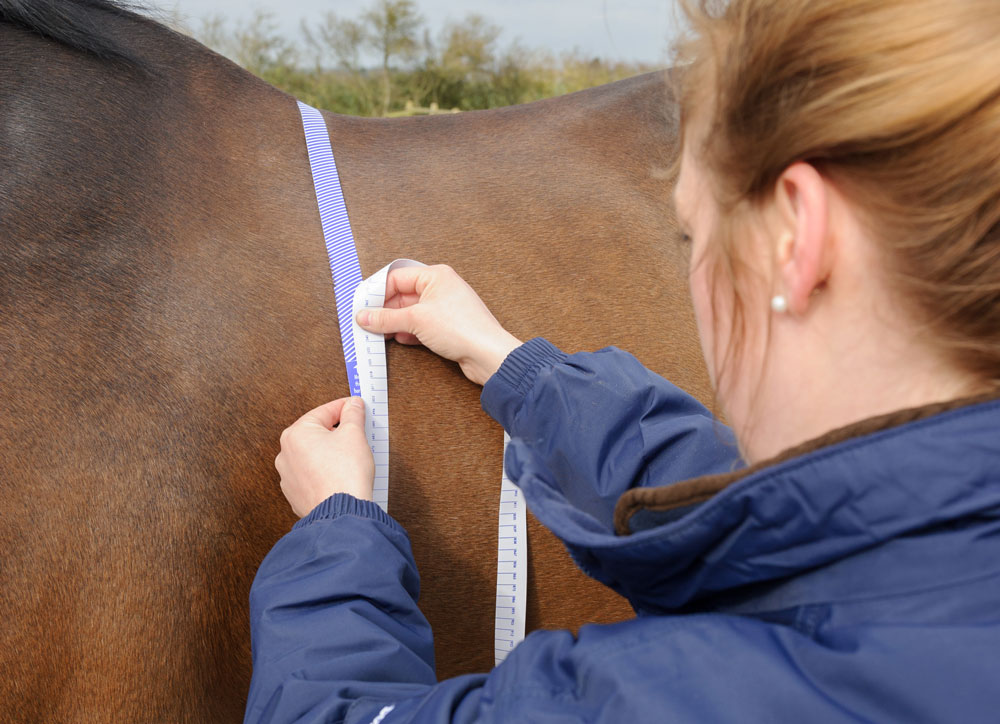Each and every horse is different, so they should all be managed individually. There are a huge number of factors affecting how easily your horse maintains body condition, including their metabolism, environment, age and workload. These are all constantly changing so we have to make small adjustments to our horse’s diet throughout their lives, particularly when it comes to horse feed for weight loss.
Horses are trickle feeders and have evolved to spend 60% of their time eating fibrous material. Forage is the most important aspect of the horse’s diet, and most of your horse’s ration should consist of grass, hay or haylage. When it comes to weight loss horse feed, it is important to look at the overall picture a horses's diet first, including their roughage.
It is generally recommended that horses receive between 2 and 2.5% of their bodyweight per day in forage. This will be between 10 and 12kg for a 500kg horse. For those who are very overweight this can be dropped down to 1.5% of bodyweight per day, but this should only be done under veterinary supervision. Forage restriction can increase the risk of digestive disturbances such as colic or gastric ulcers, or hyperlipidemia, a potentially fatal condition. Remember that this forage intake also includes grass! Good doers out on quality grass 24 hours a day are unlikely to need any extra hay or haylage.
The type of forage that you give your horse is also very important. Some hay and haylages can be much higher in calories, starch and sugar than others, and it can be very difficult to tell just from sight, smell and feel. Dodson & Horrell offer a forage analysis service which can indicate whether your forage is suitable. A forage with a digestible energy value of between 8 and 9 MJ/kg is ideal for good-doers.
If your forage is higher in digestible energy there are a few things you can do. Soaking hay for 12 hours has been shown to reduce the digestible energy content, so is great for those prone to weight gain, however, we do not recommend soaking haylage. You could also consider mixing your forage 50:50 with oat straw. Oat Straw is higher fibre and lower calorie compared to hay, and so is a great way to maintain digestive function without promoting weight gain.
To promote digestive health it is important to maintain regular, slow consumption of forage. We do not want our horses to go for long periods of time without access to forage as this can increase the risk of digestive disturbances. Double netting your hay or using a haynet with really small holes is a great way to do this. You could also try scattering the hay around your horse’s stable or paddock, as this will encourage natural foraging behaviour, slow down eating and encourage gentle exercise. We always recommend weighing out your forage and making a note of how much your horse eats.

One of the most frequent questions that we get asked is “Do I need to feed my good doer a concentrate feed?”. Choosing the right feed is very important in helping your horse to stay at a healthy bodyweight. We suggest you choose a feed that is suitable for your horse’s current body fat score rather than their activity levels. Balancers are very useful for many good doers as they are low in calories and but still provide vitamins, minerals, quality protein and any support for your horse considering their age and workload.
When it comes to weight loss, exercise is just as important as diet! Daily exercise will burn off more calories and stimulate metabolism. For horses at rest 20 minutes of brisk walking per day is a great place to start, and you can build up daily workload from there. For those already in work start by increasing the frequency of sessions, then begin to work for longer, and even increase the intensity of sessions. Lunging is a fantastic way to exercise your horse where riding is not possible.
You can also encourage exercise in the field. Moving the water and forage to different parts of the field and providing a track system of grazing will help to keep your horse moving rather than grazing one spot. Research has shown that horses out 24 hours a day spend more time moving about and trickle grazing, whereas those out for just a few hours show gorging behaviour. This means they often eat the same amount of grass as if turned out for 24 hours but in a much shorter period and with also far less movement. In some cases it may be worth considering a grazing muzzle as this limits grass intake but your horse will still benefit from gentle exercise at turnout.
When putting together a weight loss horse feed plan it is important to set realistic goals and continually monitor any progress. A loss of 1% of bodyweight per week is plenty – for a 550kg horse, this is just 5.5kg. Using a weigh tape, or fat scoring your horse every fortnight are great ways to track your progress and give you the motivation to keep going. Often it can take a long time to see any noticeable changes, which can be disheartening, but keep going and you and your horse will see the benefits!


